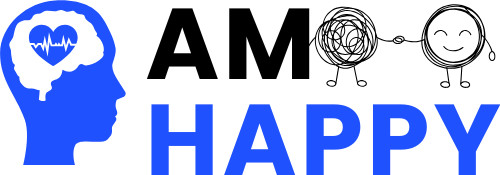Examining connections, surroundings, and the ongoing science of substance use.
Substance use disorder affects millions of Americans, while countless others grapple with compulsive actions like vaping, gambling, or excessive screen time. To delve into the latest insights in addiction neuroscience and new clinical care models, The Dorm—a mental health treatment community for young adults—collaborated with Dr. Kevin McCauley, MD, a Senior Fellow at The Meadows and a prominent figure in addiction medicine, to present a special two-part continuing education series in Washington, D.C., and New York City.
Addressing an audience of clinicians committed to aiding young adult recovery, Dr. McCauley shed light on a fundamental question in behavioral health: What really fuels addiction, and how can we create treatment settings that foster enduring recovery?
During the subsequent discussion, Dr. McCauley addressed audience inquiries and examined several relevant topics for today’s providers, including:
- Environment as Exposure
- Influence of Relationships During Recovery
- Dealing with Modern Addictions: Topics such as screen overuse and cannabis normalization.
Check out the Q+A transcript below, and watch the full presentation on YouTube.
https://www.youtube.com/watch?v=Ro4wQdpUMhc[/embed>
Audience Q&A – Investigating New Addiction Models
Dr. Amanda Fialk, The Dorm: Thank you so much, Dr. McCauley, that was an excellent presentation. Let’s start with some brave individuals present here. Anyone have questions they’d like to ask in person?
Audience Member: You discussed the mind, body, and consciousness. What are your thoughts on spirit and soul in the context of addiction, as they are sometimes connected?
Dr. McCauley, The Meadows: Traditional neuroscience might shy away from that idea, viewing it as supernatural. However, many people have spiritual experiences. You can incorporate 4E Cognition to factor that into their recovery.
A lot of 4E Cognition is inspired by Buddhism. The authors of this framework included the concept of embodied consciousness because meditation plays a significant role in understanding the brain and body, unlike traditional IRISA neuroscience that overlooks ideas of soul, consciousness, and spirituality.
Dr. Fialk: At The Dorm, we view the opposite of addiction as connection. You talked about examining the social surroundings of an individual facing challenges. One question from online was, “How do you handle situations where you have little control over a struggling client’s environment?”
Dr. McCauley: That’s a tough situation. For instance, if someone is in prison, I found myself consuming a lot of sugar and candy, which didn’t help with my cravings. I was exposing myself to an intoxicant even in that restricted setting.
A toxicologic view can still be valuable. Instead, identify potential buffers. Focus on who the person associates with in such controlled circumstances.
During my time in prison, I had four friends who were all interesting but not serious criminals. I protected myself from stressful or traumatic influences by surrounding myself with those individuals.
I agree that connection is crucial, but it’s important to note that even active drug users can form strong connections. In urban heroin addiction, individuals often create their own family units, much like women do in carceral settings. So, we shouldn’t completely disregard the connections formed, even in active addiction.
Moreover, if I relapsed and had a dollar for my recovery, I’d invest it in housing before anything else. Having stable housing is a vital social health determinant; it greatly influences the effectiveness of AA, methadone, buprenorphine, CBT, and other interventions. Without it, success rates diminish significantly.
I would suggest focusing on social health determinants even for those in unstable housing or incarceration, trying to minimize exposure to harmful situations.
Dr. Fialk: You make an essential point—the link between housing justice, medical care, and mental health care is undeniable.
We have time for one more question. I’ll merge a couple of questions about screen addiction and media. Social media and screens are central to all our lives, particularly for our young adult clients. How can we assist them in managing screen time and the pervasive presence of marijuana during recovery?
Dr. McCauley: Let’s tackle the marijuana issue first. One approach is to replace “marijuana” with “cannabis,” as the former carries negative historical connotations.
Research indicates that in states where cannabis is legalized, usage has increased overall, but youth consumption hasn’t followed suit. This suggests that young people today are being cautious about that exposure.
Understanding this from a toxicologic perspective, delaying the first experience with cannabis, even by a few years, can help mitigate potential issues.
Knowing the dosage on cannabis packaging is also crucial. For example, Washington State mandates that no cannabis product can exceed 10 milligrams of THC per package, aiding in damage control.
The daily use of screens can be examined similarly. Assess how much time a person spends on screens. At what age is smartphone use appropriate? It’s about taking breaks from technology. Determine whether someone is simply overusing or actually addicted.
This is a challenge our field needs to navigate. Once individuals achieve recovery and resilience, can they safely return to usage?
For substances like cocaine and heroin, I believe the answer is consistently no. However, with items like smartphones or social media, can we identify safe ways to use without falling into addiction? I’m optimistic that certain guidelines can significantly reduce risks.
Yet, there are universal truths about addiction. Personally, I cannot moderate my cocaine use. As addiction medicine providers, we need to accompany patients on their journey, being prepared for potential attempts at “return to use.” This is an emerging concept we need to understand.
I trust that a partnership between drug addiction specialists—whether doctors, physician assistants, or nurse practitioners—and patients will yield beneficial results. Given modern circumstances, we must develop methods for safer use.
Dr. Fialk: Thank you, Dr. McCauley. There have been numerous expressions of appreciation for this presentation.
Dr. McCauley: Thank you; it was a pleasure.


